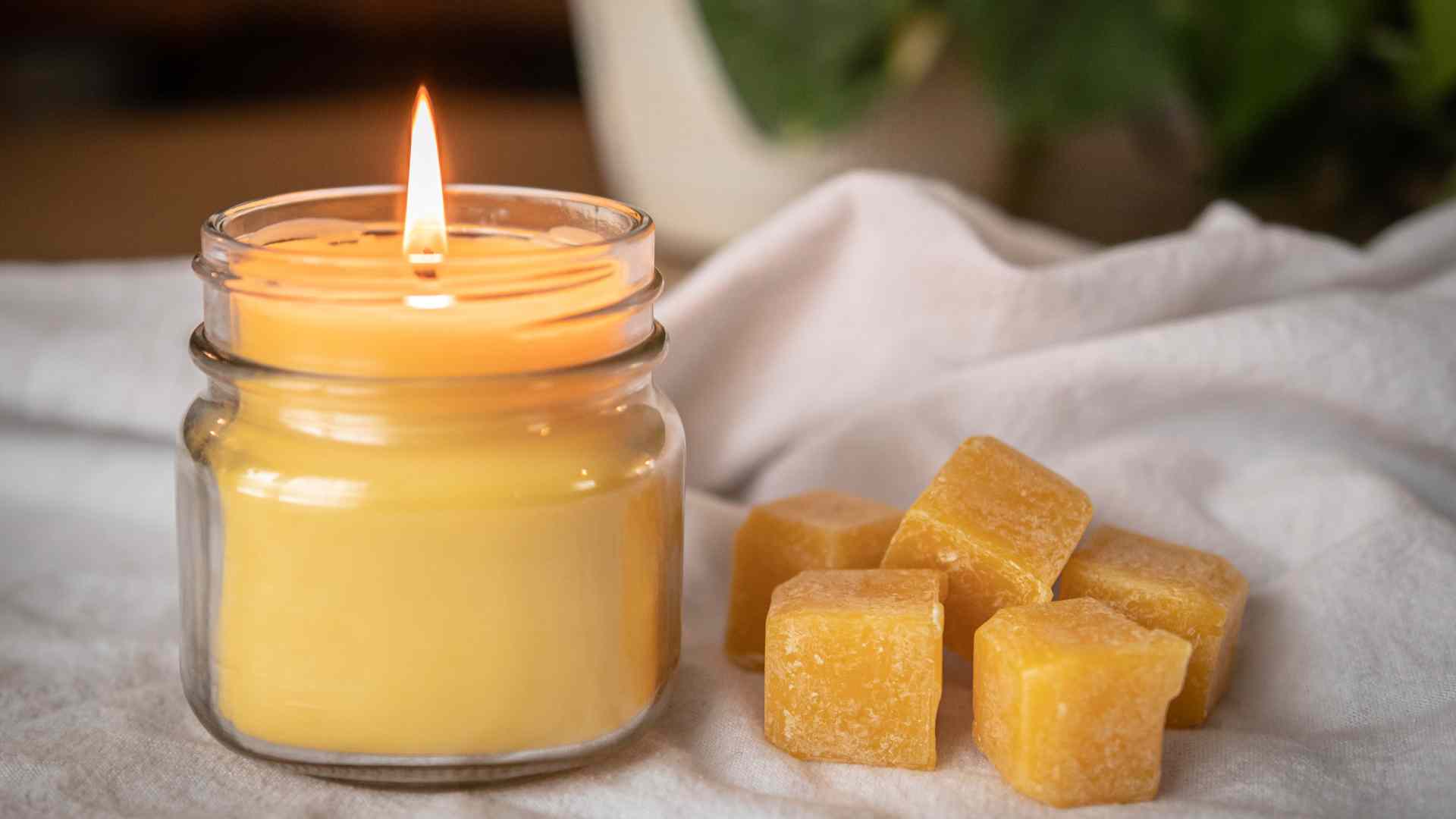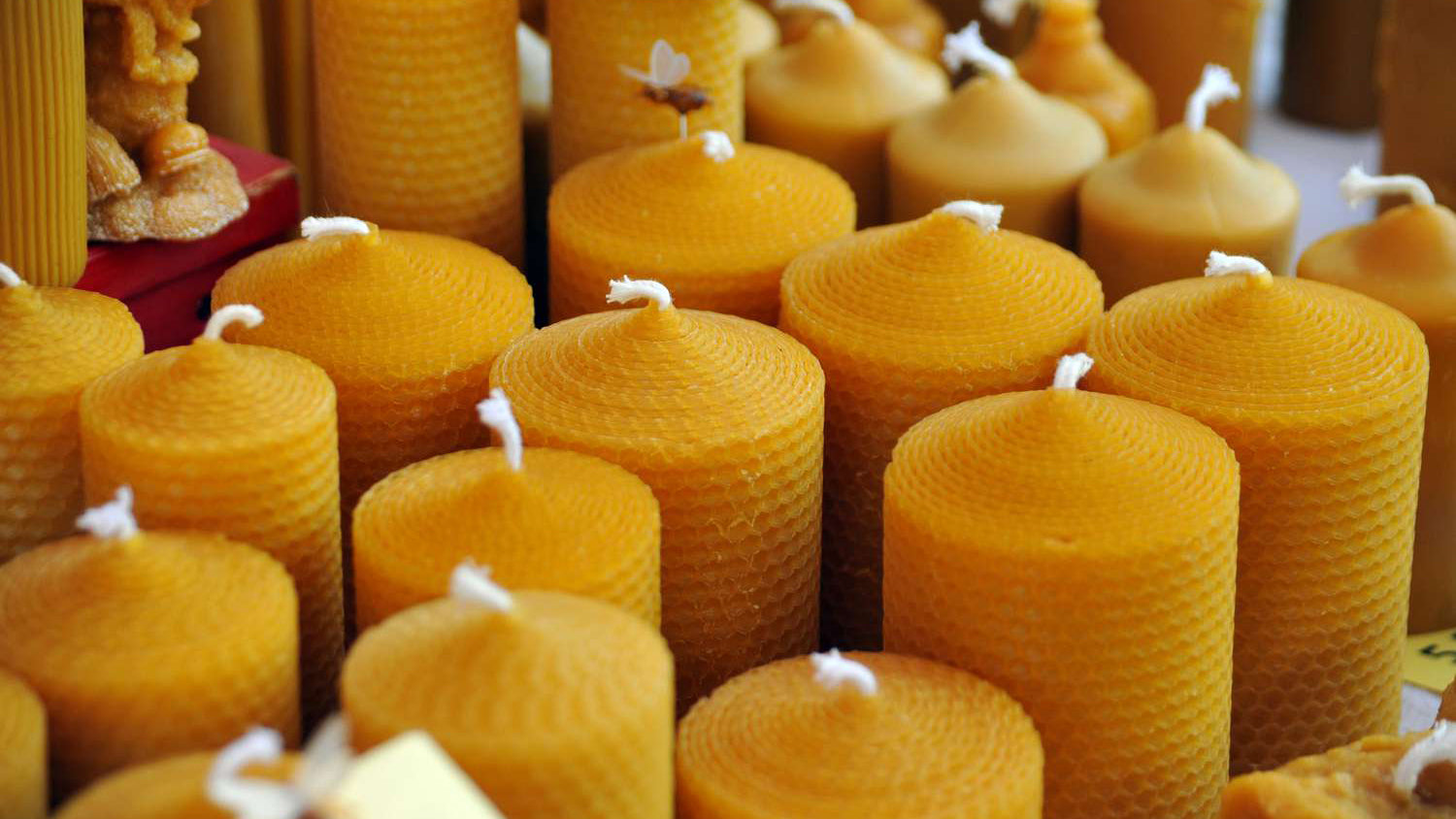Article: Beeswax vs. Soy Candles: Which is the Better Choice?

Beeswax vs. Soy Candles: Which is the Better Choice?
As awareness grows around the potential health risks of paraffin candles, many people are turning to alternatives like soy and beeswax for a cleaner, more natural candle-burning experience. Both beeswax and soy are natural materials, and when sourced mindfully, each has a relatively low environmental impact. However, there are key differences that set these two waxes apart in terms of sustainability, burn quality, and overall benefits.
In this guide, we’ll compare soy wax and beeswax so you can decide which option aligns best with your values and preferences.
- Environmental Impact
Both beeswax and soy wax have unique environmental footprints. Soy wax, made from soybean oil, is renewable and biodegradable, but its production is linked to some concerning environmental practices. The high demand for soy has led to significant deforestation, particularly in the Amazon rainforest, where habitats are destroyed to clear land for soy farming. Additionally, most soybeans are genetically modified to withstand herbicides, meaning heavy use of chemicals that can leach into the environment and impact local ecosystems.
Beeswax, on the other hand, is a natural byproduct of beekeeping. Bees produce wax as they build the honeycombs in their hives, and when beekeepers collect honey, they also harvest the beeswax. This process doesn’t contribute to deforestation or involve pesticides as directly as soy farming, making beeswax one of the most sustainable options available. When you buy beeswax from small or local beekeepers, you’re also supporting bee populations, which are essential for pollination and biodiversity.
- Vegan Considerations
Since beeswax is a product of honeybees, it is not considered vegan. Soy wax, on the other hand, is plant-based and completely vegan. For those who prefer vegan products, soy can be a good alternative, but for anyone open to animal-based materials, beeswax offers a pure, natural option with unique benefits.
- Chemical Processing
Soy wax undergoes multiple stages of chemical processing before it becomes a usable candle material. Soy oil is typically bleached and deodorized, and since soy has a lower melting point, additives like paraffin and stearic acid are sometimes added to stabilize it for longer burn times or different candle types. Dyes and fragrances are also commonly introduced, which may release toxins when burned.
Beeswax requires no such processing. Pure, unfiltered beeswax retains a natural honey-like scent and warm color, and at Slow Down Candles, we keep it that way. Each beeswax candle is unique, with slight variations in color and aroma that come directly from the flowers and plants the bees pollinated.
- Burn Quality and Longevity
Beeswax candles have a significant edge over soy in terms of burn quality and longevity. Beeswax is denser than soy wax, which means it burns more slowly and steadily, resulting in a longer burn time—typically over twice as long as a soy candle of the same size. This longer burn time can offset the slightly higher cost of beeswax, giving you more value for each candle.
Additionally, beeswax has a higher melting point than soy, around 145°F compared to soy’s 130°F. This higher melting point contributes to a brighter, warmer flame that mimics natural sunlight, making beeswax candles a beautiful choice for setting an inviting ambiance.
- Scent and Light Quality
Beeswax emits a subtle, honey-like scent, which many people find soothing and naturally pleasant. This light fragrance doesn’t overpower the senses and provides a calm, grounding aroma without the need for additional scents. Soy wax, by contrast, has almost no scent, which makes it ideal for adding fragrance oils. However, it lacks the natural aromatic benefits that come with beeswax.
In terms of light, beeswax candles produce a golden, sun-like glow, creating a cozier atmosphere that’s softer on the eyes than the cooler, whiter flame of soy candles. This warmer light can even help with relaxation and sleep, making beeswax candles perfect for unwinding at the end of the day.
- Clean Burning
Both soy and beeswax candles are clean-burning options, releasing very little soot compared to paraffin. However, beeswax candles have the added benefit of naturally purifying the air. When burned, beeswax releases negative ions, which can help neutralize pollutants like dust and allergens, leaving your indoor air cleaner and fresher.
- Cost Considerations
Beeswax is generally more expensive than soy due to the labor-intensive process of beekeeping and wax harvesting. However, with its extended burn time, a beeswax candle often lasts significantly longer, making it a more cost-effective choice in the long run. For those focused purely on up-front cost, soy may be the more economical option, but beeswax provides a premium experience and quality that many feel is worth the investment.
Which Candle Is Right for You?
When it comes to choosing between beeswax and soy, it ultimately depends on your priorities. Soy candles offer a vegan and affordable option with a clean burn and custom scent capabilities. But if you’re looking for a candle that offers a longer burn time, a naturally sweet aroma, and a warmer glow that purifies the air, beeswax candles are an unbeatable choice.
At Slow Down Candles, we’re passionate about the benefits of beeswax. Each candle is hand-poured from 100% pure, locally sourced beeswax, providing you with a luxurious, sustainable candle experience that supports both your wellness and the environment.
So, next time you’re deciding on a candle, consider the journey of each wax and the unique qualities it brings to your space. With beeswax, you’re not only choosing a candle—you’re choosing a slower, more mindful way of living.

